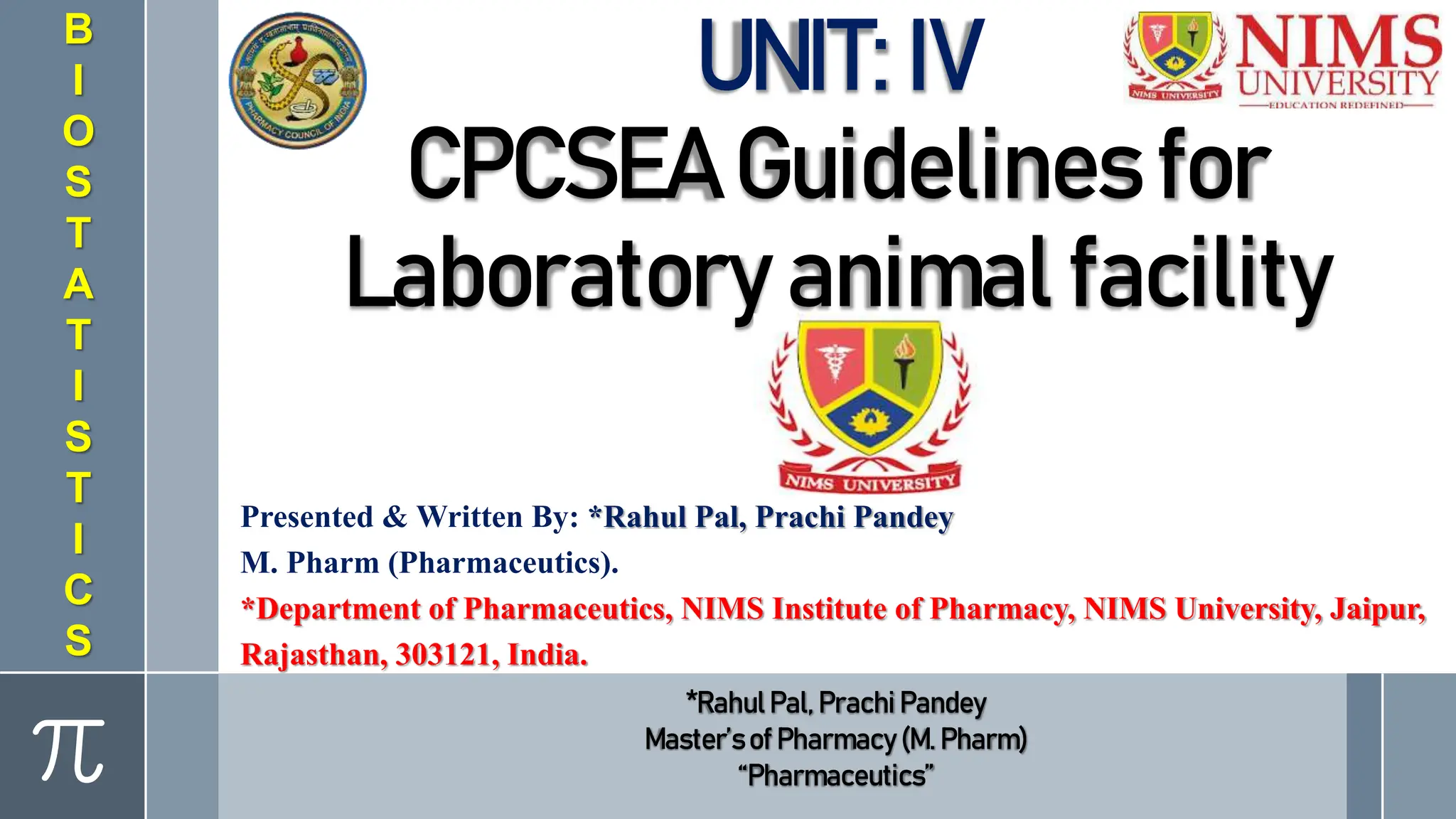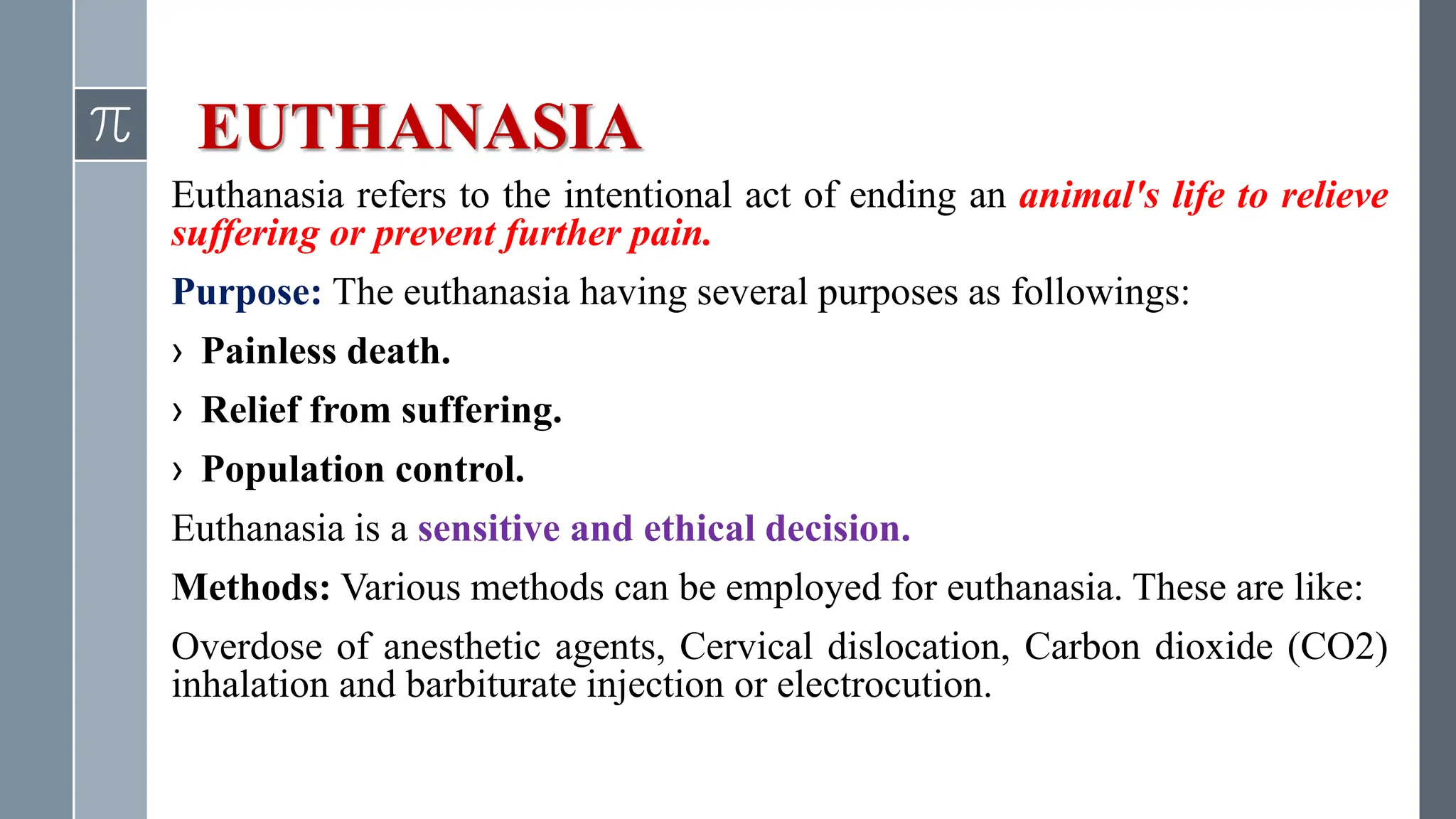The document outlines the CPCSEA guidelines for laboratory animal facilities, focusing on goals such as humane treatment, veterinary care, disease control, and personal hygiene. It emphasizes the importance of quarantine, surveillance, diagnosis, treatment, as well as guidelines for anesthesia, euthanasia, and environmental enrichment for animal welfare. Additionally, it highlights the need for thorough record-keeping, standardized operating procedures, and well-trained personnel to promote ethical research practices.

























